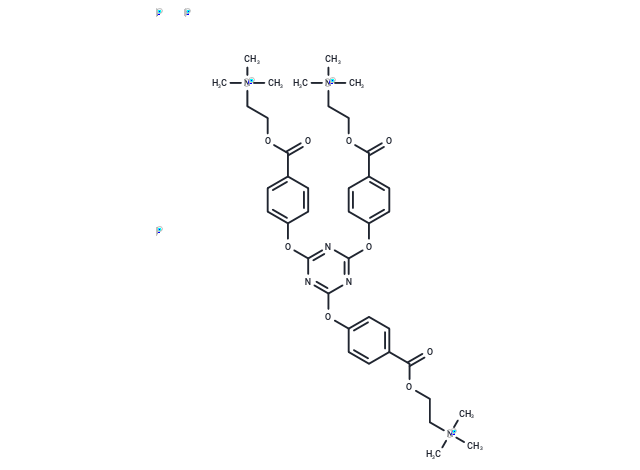Shopping Cart
- Remove All
 Your shopping cart is currently empty
Your shopping cart is currently empty

TAE-1 is an inhibitor of amyloid-β fibril formation and aggregation. It inhibits cholinesterases AChE and BuChE with IC50 of 0.3 μM and 3.9 μM, respectively.

| Pack Size | Price | Availability | Quantity |
|---|---|---|---|
| 25 mg | $53 | In Stock | |
| 50 mg | $93 | In Stock | |
| 100 mg | $137 | In Stock |
| Description | TAE-1 is an inhibitor of amyloid-β fibril formation and aggregation. It inhibits cholinesterases AChE and BuChE with IC50 of 0.3 μM and 3.9 μM, respectively. |
| Targets&IC50 | AChE:0.3 μM |
| In vitro | The effects of TAE-1 on differentiated human SH-SY5Y neuronal cells grown in tissue culture.?Results showed that the stimulation of neuronal cellular process length and branching was noted.?Moreover, the increased synaptophysin suggested that TAE-1 could stimulate synapse formation.?Increased expression of MAP2 was also observed, indicating that TAE-1 promoted the differentiation of human neurons.?In addition, targeted AChE inhibition was evaluated by electrochemical quantification of the enzymatic product, thiocholine, on unmodified gold screen-printed electrodes.?It was found that at increasing TAE-1concentrations, there was a corresponding decrease in the AChE activity resulting in reduced amount of oxidizable thiocholine.?The IC50 value was found to be 0.465 μM for TAE-1[1] |
| Molecular Weight | 1128.57 |
| Formula | C39H51I3N6O9 |
| Cas No. | 1414469-59-2 |
| Smiles | [I-].[I-].[I-].C[N+](C)(C)CCOC(=O)c1ccc(Oc2nc(Oc3ccc(cc3)C(=O)OCC[N+](C)(C)C)nc(Oc3ccc(cc3)C(=O)OCC[N+](C)(C)C)n2)cc1 |
| Relative Density. | no data available |
| Storage | Powder: -20°C for 3 years | In solvent: -80°C for 1 year | Shipping with blue ice. | ||||||||||||||||||||
| Solubility Information | DMSO: 11.29 mg/mL (10 mM), Sonication is recommended. | ||||||||||||||||||||
Solution Preparation Table | |||||||||||||||||||||
DMSO
| |||||||||||||||||||||

Copyright © 2015-2024 TargetMol Chemicals Inc. All Rights Reserved.